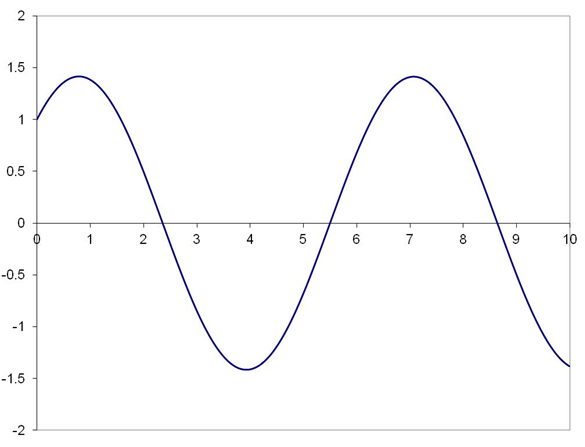The forward Euler at time tn uses the derivative at tn to march to tn+1. Instead, if the derivative is obtained at time tn+1, the method becomes the Backward Euler. Mathematically, it is represented by the following equation:
Since the function y(x) appears on both sides of the equation, one can no longer simply march forward between time steps. Rather, one needs to perform an iterative root-finding algorithm to determine y(x) at each time step
A simplified algorithm for the Backward-Euler can be summarized as follows:
1) % Define step size (h), initial function y(0), initial time t0, final time tf, eps
2) nosteps = (tf – t0)/h
3) for i ← 1 to nosteps
- Calculate derivative function f[t0,y[i]]
- Iterate until y[i] – (y[i-1] + h*f[x(i), y(i)]) < eps
- t0 ← t0 + h
- Iterate until y[i] – (y[i-1] + h*f[x(i), y(i)]) < eps
- t0 ← t0 + h
4) % Display results
‘eps’ is a user-specified tolerance value for the root-solver. The solver iterates until the equation at each time step is less than ‘eps’. The value that satisfies this condition is the numerical solution at that time. The iteration can be performed using any root-finding algorithm like the Bisection or the Newton-Raphson method. A modified form of the subroutine ‘rtbis’ adapted from Numerical Recipes, (The art of scientific computing, Press et al, 2nd ed.) was used for this exercise.
The Backward Euler’s method was applied to the following problem (Atkinson et al, Numerical Solution of Ordinary Differential Equations, Eg. 5.8).
The solution is shown in fig. 1.

[…] the other hand, methods such as the Backward Euler require iterations at each step to converge at a solution. Such methods that require an iterative […]
ReplyDelete[…] Euler’s methods (both forward and backward) are single step methods, as is evident from the formulation. An improved solution for ODE’s can […]
ReplyDelete[…] noted earlier, the solution of ODE’s using implicit methods (such as the Backward Euler’s method) requires an […]
ReplyDelete[…] how does one avoid iterations and yet be able to solve the Backward Euler’s method? Press et al (Press, Teukolsky, Vetterling & Flannery, Numerical Recipes, The Art of […]
ReplyDelete[…] matrix formulation of the Backward Euler negates an iterative process, but introduces a matrix inversion. One matrix inversion suffices for […]
ReplyDelete